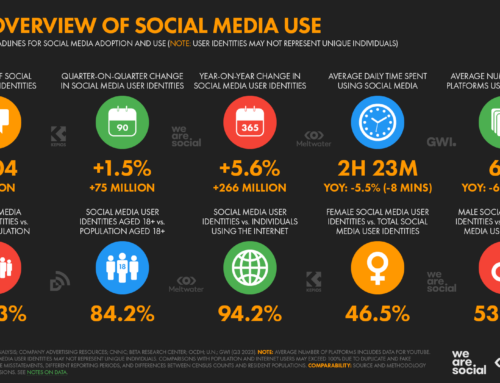
Drew Bernard
This Thursday, June 4th, ActionSprout will join us in presenting Beth Becker’s FREE WEBINAR How to Master Facebook’s News Feed Algorithm to Boost Your Content. Here is a little taste of what you’ll learn. ~Kristina
Guest Post by Drew Bernard, Founder and CEO of ActionSprout
Facebook has recently made several changes to the algorithm that determines which content shows up in all of its 1.4 billion monthly users’ News Feeds, including your supporters. How much of an impact these changes will have on your content being seen will depend on your current content strategy, how shareable it is, and the degree to which it taps into your supporters’ sense of social self. Let’s start by walking through the recent updates followed by the impacts they’ll have and the best strategies to ensure your content is seen by as many supporters as possible.
Likes Become Less Important
Simply put, when a person likes one of your posts, it is now less likely that their friends will see them do it. The most impactful of Facebook’s three algorithm changes, with this alteration Facebook downplays the importance of likes, weighting them as lower value and thus showing them far less frequently – or possibly not letting them show up at all. Facebook made this change as research indicated users were less interested in seeing posts friends liked or commented on and more interested in other news from friends and publishers, which leads us to the second change…
Content Mix-Up in the Newsfeed
This second change also originated from Facebook’s recent research in which respondents said they are worried about missing important updates from friends and pages. As a result, according to Facebook, “As more people and pages are sharing more content, we need to keep improving News Feed to get this balance right.” This change does just that, aiming to ensure that content from people and pages individuals care most about appears more reliably in the News Feed, getting the balance of content right for every person.
Multiple Posts from a Single Publisher
Third, Facebook is now allowing more than one post in a row from any single source. This change was spurred by those individuals who don’t have a lot of content to see in their News Feed. Now, with multiple posts possible, these folks won’t miss out on important posts and updates by pages and people they follow. If a person runs out of content, but want to spend more time in the News Feed, with this change they’ll be assured of seeing more. This is potentially good news for organizations who have loyal followers interested in their content. These people will be sure to see your content – and more of it!
What’s the Impact of these Changes?
The potential impact these changes have on an organization’s post distribution and reach depends greatly on the makeup of your audience and content strategy. The key to ensuring continued reach and to maximize exposure with these changes is to create and post a regular cadence of content that your audience feels is meaningful, in sync with their sense of social self, and as a result, shareable. Let’s talk about each of these.
- Having a regular posting cadence is critical to Facebook success. I recommend that organizations err on the side of posting more often than less, which has been proven out in our and Facebook’s research. Consider that increasing post volume by an average of 45% over a week resulted in a 76% increase in outbound clicks, 10% increase in likes per post, and 47% increase in fans.
- However, frequently posting a bunch of stuff won’t move the needle. Make sure that you are posting content that is meaningful to your audience. You can do this in a few ways. First, look at your Facebook Insights to see which posts have historically received the most interest from your audience. Was the content funny? Motivational? Informational? And, what was the content mechanism that resonated most? Images? Videos? While you don’t want to only post funny videos, knowing the mix of content that receives the most traction is critical. Also be sure to embed calls-to-action in your posts to inspire engagement and encourage the potential for cross-marketing opportunities.Second, don’t feel like you need to create bushels of content yourself every day. Follow the 80-20 rule, curating 80% of your content from like-minded sources and creating the remaining 20% yourself. Moreover, give your audience a mix of on-message posts and content that your audience will simply enjoy and appreciate.
- Keying into your audience’s sense of social self is critical to Facebook success. What does this mean exactly? Well, Facebook is a social, public platform. Which means that things your supporters interact with could very well be seen by their friends. This fact precludes them from sharing anything that they don’t want to be associated with their social persona, or social ‘self’. So, before you post anything, ask yourself, ‘Would I share this?’ ‘Would I want this piece of content associated with my Facebook persona?’ If the answer is ‘no’, go back to the well and create or curate something new.
- Once you have content that resonates with your audience’s sense of social self, you are well on your way to a posting strategy that encourages sharing, which with these changes is imperative to maintaining organic reach. Loyal supporters that interact with your content will be sure to continue to see your content in their News Feeds. However, second-hand opportunities for your content to be seen will decrease with likes and comments from friends being marginalized in the News Feed. Therefore, the goal is to grow the pool of loyal supporters that interact with your content to ensure as many people see your content as possible.
At the end of the day, Facebook users control what they see through the people and pages they follow and the content they interact with. To avoid feeling the continued impact of algorithm changes like these, nonprofits would do well by embracing Facebooks number one goal: Making the News Feed experience for users as meaningful as possible. By creating content that supports this goal, nonprofits will help advance their organizational missions by ensuring that their content is seen and acted on within Facebook.
Drew Bernard is the founder and CEO of ActionSprout.com where he helps nonprofits and political campaigns further their mission by engaging supporters in social media. You can find him on Twitter @DrewBernard
Want to join us for the webinar or want to receive access to the recording? Just fill out the form below:
[sc:062415]





